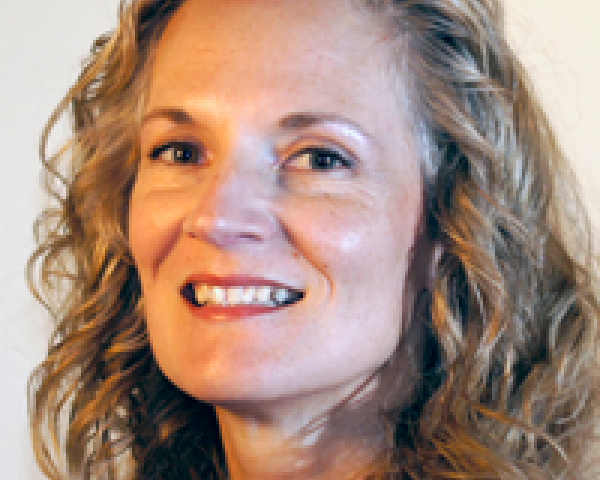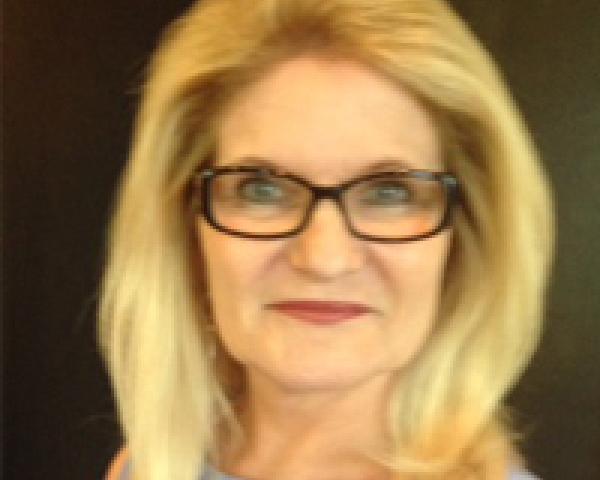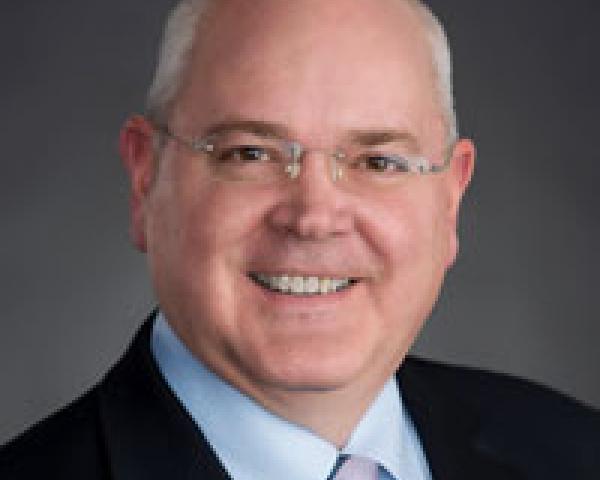In the spring session of the Texas Legislature, I listened to testimony about the impending House Bill 335, which would have prohibited the sale of Named Driver auto policies in Texas.
So what does this have to do with microinsurance?
A recent development, microinsurance has primarily been considered to offer solutions in life insurance, credit insurance and agricultural insurance and is being marketed primarily outside the U.S. to low-income individuals and families. See the recent article by the CPCU Society in its Insights publication as an excellent primer on the relatively recent development and use of microinsurance in these foreign markets.
The question is: Can we learn from foreign microinsurance programs to help solve an insurance dilemma closer to home--how to make automobile insurance accessible and affordable to foreign-born, non-licensed residents in the U.S.
During the testimony on proposed Texas HB 335, insurers and other interested parties repeatedly argued that the Named Driver product was needed to provide an option for “low-income households” in Texas--the very argument made on behalf of microinsurance in foreign countries (where, of course, the definition of poverty may be quite different than in the U.S.). Only we don’t have to go to a foreign country to find potential customers.
An estimated 3% of the current U.S. population is individuals who have immigrated, not only from Mexico but from Central America, South America, Europe and Asia. Isn’t this population ideal for microinsurance?
Foreign-born potential customers have behavior patterns and attitudes toward personal risk management and poverty that have followed them to the U.S.
This group needs to assimilate and follow U.S. laws of financial responsibility. But as far as any evidence of prior insurance, any credit history, the availability of driver history and the ability to pay, this market differs from the typical U.S. consumer.
I find striking parallels between what is being attempted in Texas with the non-standard market and the goals and concepts espoused in microinsurance.
Based on my experience in the non- standard market, my assessment is that the industry has attempted to capitalize on the burgeoning market, but the question is --has it done so in a manner that is consistent with the principles of effective microinsurance?
I would submit that we have not yet matured in our approach to providing auto insurance to the low- income, non-licensed immigrant population. Perhaps now is the time to take a step back and focus on both goals of effective microinsurance: 1) to help the poor and 2) to make a profit.
Explosive growth in the non-standard market indicates that insurers have seized the opportunity. But couple this positive impact with the confusion and outrage over issues like the Named Driver policy debate, and the 2014 legislation that forced insurers to more clearly inform a consumer that he is purchasing a policy that has strict limitations of coverage in Texas. We may have a long way to go.
As an industry full of collaboration, expertise and innovation, why should we draw the attention of the state legislature? Surely, we can come up with better solutions.
We have an obligation to look “beyond the profit” and consider the societal implications of the programs we implement.
It may be helpful to illustrate some examples of exactly how the non-standard auto market meets, or falls short of achieving, the goals of microinsurance. This might lead us to actions that could improve access, affordability and quality of auto insurance to the foreign-born, low-income, non-licensed resident in the U.S. This might also shed some light on the challenges ahead.
SUAVE
Accepting the challenge of Chmielewski and others, let’s view the non-standard auto market through the lens of microinsurance. Because the concept of microinsurance only arose in the 1990s, it may be helpful to restate the definition according to the Microinsurance Center:
“Microinsurance is risk-pooling products that are designed to be appropriate for the low-income market in relation to cost, terms, coverage, and delivery mechanisms.”
We can employ the framework suggested by Chmielewski that effective microinsurance should have the following characteristics: It should be Simple, Understood, Accessible, Valuable and Efficient, or SUAVE.
Is the Non-Standard Auto Product Simple?
Most of us grew up on the standard ISO Personal Auto Policy. Even so, we are continually challenged to correctly analyze and interpret coverage terms, insuring agreements, exclusions and conditions. Even today, articles are being published educating us about whether our personal auto policies cover rental cars! Insurance contracts are complex.
If we are challenged with our years of experience, how then might we expect a non-English speaker to understand non-standard policy language in insuring agreements, exclusions and endorsements? Imagine how the foreign-born consumer must struggle to understand the coverage restrictions and limitations that vary from one non-standard policy to another.
An example of this complexity in coverage terms can be seen in some non-standard auto coverage offered under Part D Damage to Your Covered Auto. Agents and purchasers of non-standard Physical Damage Coverage may approach this coverage according to traditional assumptions. That is, that Part D is first-party coverage being purchased for the insured’s financial protection against loss to the insured’s property itself as a result of a collision or a comprehensive-type loss, like theft or vandalism.
However, although a premium is paid, non-standard policies may not provide Physical Damage coverage under certain circumstances—such as when the person driving the vehicle is not named on the policy. The vehicle may not be covered for theft if the person who last had custody of the vehicle is not a listed driver. Permission to drive the vehicle is not a relevant factor.
This Part D coverage is often restricted by endorsement, and the interpretation of the endorsement itself is often the subject of discussion and disagreement by those selling the endorsement.
And yet we expect the non-English speaker with most likely limited education to fully understand that if he allows his resident brother who is not listed on the policy to drive his vehicle, and the car is totaled, that he may have NO collision coverage? In addition, the lienholder is often surprised that there may be no coverage for the lienholder either in this scenario.
While insurers understandably insist on narrowing down the known risk and declare that a premium reduction justifies this treatment of Physical Damage coverage, others may offer that this is form freedom gone awry.
No, non-standard auto coverage is not simple. It fails the test of simplicity. Chmielewski may argue that trying to sell this traditional product to this market is not effective.
Is the Non-Standard Auto Product Understood?
When I meet people who, like me, have spent most of their careers in the standard market and I mention Unlicensed Driver Auto Policies, eyes glaze over as if these policies are a figment of my imagination. (As a point of clarification, these are not policies sold to individuals who have had their licenses revoked or suspended or have a poor driver history. Rather, a foreign-born individual is considered an unlicensed driver because he cannot obtain a driver’s license in some states.)
Not only is the non-standard product not simple, the product is also difficult for judges, law enforcement officers, lawyers, claimants and, yes, even underwriters and other insurance professionals to understand. Exactly how does an individual who does not qualify for a driver’s license qualify for a valid auto insurance policy?
Given the complexity of the product, the uninformed consumer and market reaction, has the industry provided information or training regarding this non-standard product to improve understanding? Does the industry provide adequate training to the agents who are on the front-line selling this product? My experience says: no.
Consumer complaints in Texas forced legislation in 2014 to require insurers selling the Named Driver policy to issue both a written and oral contemporaneous warning to policy applicants at time of sale that the policy has restrictions on coverage for drivers. This law was a significant blow to Texas non-standard insurers. Some have appealed for more lenient requirements, and some left the market.
Why were these drastic measures needed? Because the consumer did not understand the coverage.
Is the Non-Standard Auto Product Accessible?
The change in underwriting eligibility for some non-standard policies has spawned the “No License? No Problem!” business model we see advertised on agency storefronts along Texas highways in neighborhoods where immigrants tend to cluster.
The existence of this type of marketing does appear to make the product accessible. The close-knit characteristic of foreign immigrants and sense of family unit responsibility allows for very effective word-of-mouth marketing. Local agents are accessible for initial personal assistance with applications, payments or policy maintenance. Neighborhood shopping creates a captive customer pool, and there are literally thousands of agents in Texas alone.
The product is also accessible because it is sold with 30-, 60- or 90-day policy terms in addition to a six-month option. One insurer testified at the Texas legislative hearing that, at some point in the year, a significant number of customers experience gaps in coverage due to inability to pay a premium. Offering shorter terms appeals to the buyer.
However, what is often overlooked is that this convenience and accessibility come at a cost, in Texas anyway. While the advertisements for “Liability Insurance for $29.00 a Month!” sound appealing, when a policy lapses, and must be reinstated, Texas allows agents to charge fees that are not regulated. While insurers are quick to say that they do not charge the customer a reinstatement fee, they turn a blind eye to this practice by the agents selling the policies. Selling these shorter-term policies raises ethical issues because agents have the option of collecting new-policy fees more often.
Although the customized payment terms seem to be consistent with effective microinsurance and appear to meet the customer’s need for low premiums, the reality is that a $29 monthly premium does not include policy fees and other surcharges such as substantial one for not having a valid U.S. driver’s license.
Is it time to re-evaluate the distribution channel? Can larger economies of scale reduce the need for policy fees and make total payments more affordable, to the point that applicants might list all drivers?
Does the Non-Standard Auto Product Offer Value?
We can agree that auto insurance should offer peace of mind and protection from financial loss. Even with all its restrictions, a basic level of coverage offered by non-standard forms may benefit the individuals named on the policy.
Maybe we could also agree that, if a foreign-born driver living in the U.S. cannot obtain a driver’s license because state law does not allow it, it may still be advantageous for that driver to have auto insurance. A lienholder would require insurance to protect its interest in the vehicle.
The question of whether the non-standard product is valuable to policyholders might lie in the insurer’s response to claims. Legislators questioned Texas insurers about the seemingly high number of claims denied. However, the data was difficult to interpret, and, because the details are proprietary information, no definitive conclusions can be drawn.
But Chmielewski asks only if the product meets the needs of, or has value to, the low-income customer. Of equal importance is whether the product meets the needs of the public at large in the U.S.. How well the non-standard auto product achieves this goal is up for debate.
Enter the uninsured motorist dilemma...
Unlike the standard form, under the non-standard Named Driver policy no coverage may be afforded for anyone living in the household who may be driving the insured vehicle who is not listed on the policy, and members of an extended family might be living in the same household.
This is not only a problem for the driver himself, who may have no coverage if he is not the Named Driver, but a problem for an injured claimant struck by one of these members of the extended family. Just ask the family of Walter Sullivan, who was struck and fatally injured on a Sunday morning. Even though there was a policy in effect on the vehicle, the insurer denied coverage to the driver. The Sullivan family was left to its own financial resources to fill the void created by the wrongful death.

So the question of value is two-pronged. Is it enough that the policy has value to the policyholder? Should our model of microinsurance as it pertains to U.S. non-standard auto not also assess if the product has value to the driving public?
A dilemma is presented when current non-standard insurers argue that the sale of their policies is the panacea for the uninsured motorist problem. They state that, without these affordable policies, the uninsured motorist rate will surely increase. I would argue that it depends upon how the rate is derived.
Statistics from, say, Texas Sure, report only insured vehicles. But there is no way to track the “functionally insured” -- those drivers who are driving a vehicle that is insured, while the driver is not.
Another issue is the restriction on business use contained in some non-standard policies. Standard personal auto policies allow some business, but some non-standard policies exclude all business use.
This treatment of business use raises the question: Are we overlooking the issue of “Who is the customer?” The customer may be the landscaper, construction worker or tradesman who uses his vehicle to carry his tools and drive from one site to another. Often, only after an accident, does the policyholder learn that he has no coverage because the insurer sees a placard on the driver’s door and denies coverage because of "business use" of the vehicle.
This scenario runs counter to the principles of effective microinsurance; the policies restrict coverage so severely that they may have little value to the customer.
Is the Non-Standard Auto Product Efficient?
Efficiency is an area where significant progress has been made in the auto market in general. And the non-standard market has enjoyed these efficiencies. Where premiums are purportedly lower, administrative costs have to be low.
Automation means applications can be generated and signed in the agent’s office on a signature pad, premiums can be collected and credited to the policy instantly to bind the coverage, vehicle photos can be uploaded to the underwriting file, polices can be sent automatically without effort by the agent, and notices such as renewals are automatically generated. Automation also allows for policy self-service via online or by phone, which is encouraged to keep costs down.
Efficiency occurs when insurers encourage agents to sell the policies and leave the customer service— telephone payments or policy changes--to the insurer’s customer service department. Not tying up the agent maximizes cash flow.
The Challenge
Without getting too deep into the political mire: Progress is likely to be hindered by the lack of an immigration policy and inconsistency from state to state on immigration issues. For example, state legislatures decide whether to grant driver's licenses to immigrants, and the question often evokes emotional responses.
From a business standpoint, licensing drivers would help capture driving history. Traditional underwriting criteria are not useful when there is no DMV record for an applicant or resources for reasonable evaluation of the risk. Driver’s licenses give insurers access to driver information, which allows for each driver to be rated on his driving history, not his nationality.
Neither from a business opportunity standpoint, nor from a social responsibility standpoint, should we ignore the potential of the foreign-born U.S. resident. Some insurers have grown exponentially in this market under the existing policies, terms and lack of underwriting information. But is the kind of growth the industry desires—after reflecting on some of this issues raised in this article?
Consider that these policyholders may eventually rise above the need for minimum-limit, restricted coverage policies. Most of these individuals are here to stay, grow their families and possibly build their own businesses. If properly serviced, a company could develop a pipeline of ready applicants for more standard products, including renters or homeowners insurance and commercial insurance. These customers of tomorrow promise to be untapped potential worth further investigation.
While he was not referring to domestic use of microinsurance, Chmiewlewski ‘s thought-provoking introduction to the topic begs to be given consideration in the non-standard auto market, especially as it relates to foreign-born unlicensed drivers in the U.S. In “Microinsurance 101,” he lays out the challenge:
“Microinsurance products have proven helpful when the product and delivery are tailored to the specific needs of the policyholder, and when the policyholder is educated to understand the value and limitations of the specific policy.”
With no easy answers, this is perhaps a place to start.


















